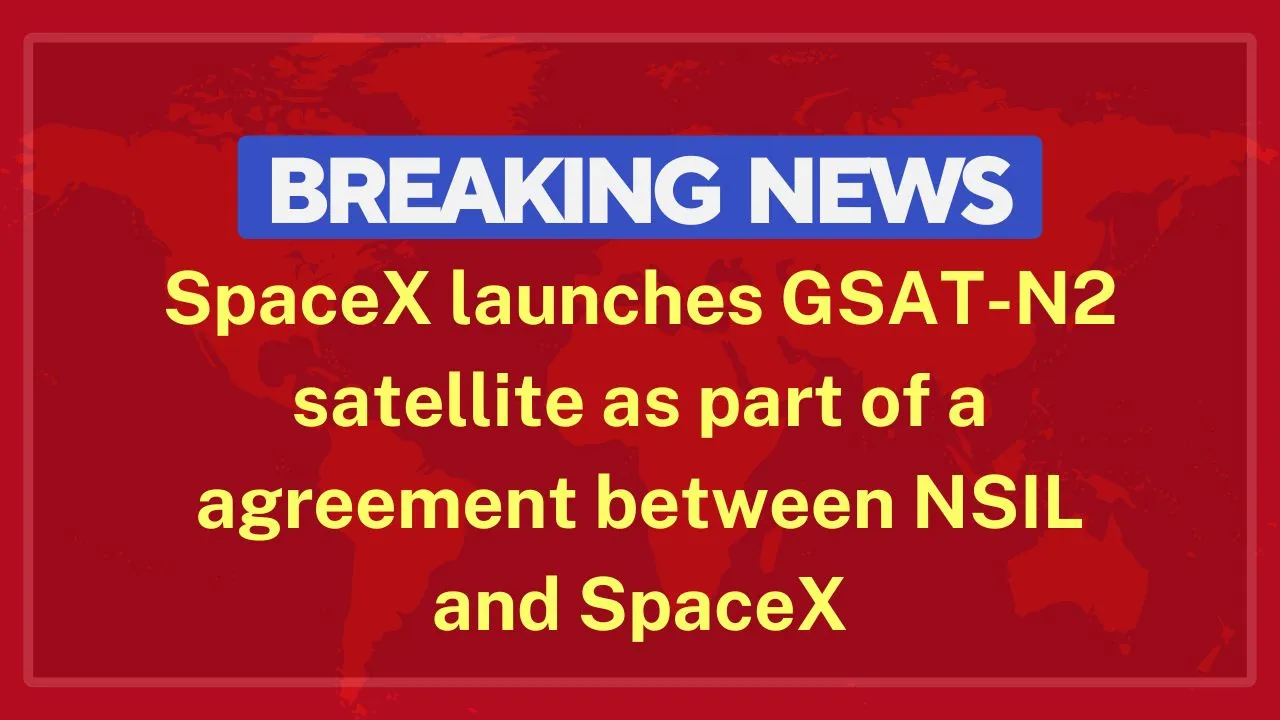Elon Musk’s SpaceX successfully launched the GSAT-N2 communication satellite, also called GSAT-20, from Cape Canaveral Space Force Station in Florida on November 19, 2024, at 12:01 AM IST reported Hindustan Times. This launch marks a significant collaboration between SpaceX and the Indian Space Research Organisation (ISRO) through its commercial arm, NewSpace India Limited (NSIL).
The satellite was successfully placed in orbit after 34 minutes of launch. ‘Thanks for the ride @SpaceX!’ said ISRO in a post on X.
GSAT-20 has been successfully placed into the Geostationary Transfer Orbit! 💫 #ISRO
Thanks for the ride @SpaceX! ❤️pic.twitter.com/C9ddoT2CGH
— ISRO Spaceflight (@ISROSpaceflight) November 18, 2024
Launch Overview
The GSAT-N2 satellite weighs approximately 4,700 kg and was deployed aboard a Falcon 9 rocket. It has been placed into a Geo-synchronous Transfer Orbit (GTO), with operational control now transferred to ISRO’s Master Control Facility. This launch is part of a broader initiative to enhance India’s communication infrastructure, particularly in remote and underserved regions.
Objectives and Capabilities of GSAT-N2
The GSAT-N2 satellite is designed to deliver high-throughput communication services throughout India. Operating in the Ka-band allows for higher bandwidth and improved data transmission. Key features include:
- 32 User Beams: The satellite is equipped with eight narrow spot beams targeting the Northeast region and 24 wide spot beams covering the rest of India.
- High Capacity: It boasts a throughput of around 48 Gbps, significantly improving broadband access and enabling in-flight internet connectivity for commercial airlines.
- Operational Lifespan: The satellite is expected to function effectively for about 14 years, catering to a large number of subscribers using small user terminals.
This satellite plays a crucial role in addressing the digital divide in India, especially in areas where internet access has been historically limited. It also positions SpaceX’s Starlink to compete directly with established internet service providers like Jio and Airtel as it enters the Indian market.
Technical Specifications
The GSAT-N2 incorporates advanced technologies that enhance its operational efficiency:
- Multi-beam Architecture: This design facilitates frequency reuse, thereby increasing overall system throughput.
- Payload Configuration: It features three parabolic deployable reflectors measuring 2.5 meters each, which generate the 32 spot beams.
- Propulsion System: The satellite utilizes a bi-propellant chemical propulsion system for orbital adjustments and stabilization.
- Sensors: It is equipped with various sensors, including Sun Sensors and Earth Sensors, to maintain precise attitude control.
Importance of the Launch
The successful deployment of GSAT-N2 represents not only a technological milestone but also a shift in India’s approach to space partnerships, encouraging collaboration with international commercial space firms. Historically, India relied on Arianespace for launching heavier satellites; however, geopolitical factors have prompted a search for alternative providers. SpaceX has emerged as a strong contender in this regard.
Union Minister Jitendra Singh commended this partnership, emphasizing its potential to enhance internet service delivery across India under Prime Minister Narendra Modi’s administration.
In summary, the launch of the GSAT-N2 satellite by SpaceX not only bolsters India’s communication capabilities but also opens new avenues for future collaborations in space technology. This partnership could lead to innovative solutions that meet the growing demand for high-speed internet connectivity across the nation.

